
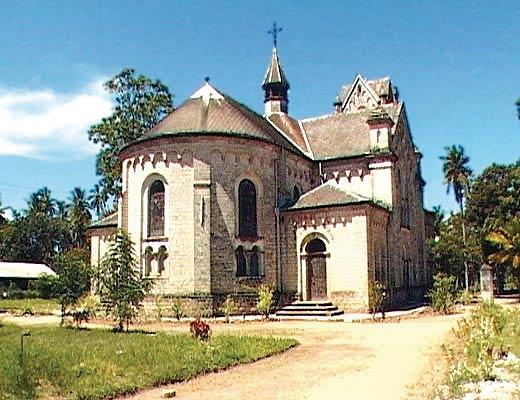
United Republic of Tanzania - one of the
most interesting and visited countries in Central Africa and the African
continent as a whole. The island of Zanzibar and Kilimanjaro, safari in
the national parks, diving and surfing attract many tourists every year
from all over the world.
Located on the east coast of Central Africa, Tanzania has a common
border with countries such as Kenya, Uganda, Rwanda and the Congo,
Zambia, Malawi and Mozambique. Thanks to this arrangement, visiting
Uganda can be combined with excursions to neighboring countries.
The currency of Tanzania, Tanzanian shilling exchange for U.S. dollars
at the rate of about 1,300 Tanzanian shillings per dollar, so often it
is convenient to pay in dollars, which have in the country is quite free
circulation.
Tourists who are used to traveling with credit cards, before a trip to
Tanzania is still advisable to take some cash to pay off card because
even in the large cities of the country can not in all cases. However,
note that some banks charge for cash on the card a very high percentage
(up to 8%).
Official language in Tanzania, two - Swahili and English. But in
practice, free to explain in English can mostly live in big cities and
rural residents often do not speak Swahili, and on some of the many
local dialects.
The local people of Tanzania did not always have a positive attitude to
attempts to photograph them, so do it without permission is not
recommended, as well as Tanzanians go home without an experienced guide
or conductor.
Climate in Tanzania
Climate Tanzania has distinct periods of temperature - cool from June to October and warm - from December to March, with intermediate sub-period between the month. On the coast, a tropical climate with high humidity and daytime temperatures of 25 to 29 grad.S. On the central hill daily temperature ranges from 20 to 27 degrees C, and may even drop to zero in June, July and August, and in the remaining months to rise to 30 grad.S. On the territory of most of the country marked by two of the rainy season - the "long rains� (masika) from mid-March to May, inclusive, and the "short rains� (mvuli) in November, December, and sometimes in January. Due to global climate change on the planet has recently been a significant shift in time the onset of a period, we recommend you pay attention to it at the timing of the planned visit to the country.
Traditions of Tanzania
Tanzania mainland
population consists almost entirely of Africans. The vast majority of
them are engaged in agriculture. After the establishment of state
control over the economy, many non-Africans lost their jobs and had
emigrated. Africans after the most significant part of the population
were immigrants from Asia, mainly from India and Pakistan, but in the
two decades after 1961 their number decreased from 88.7 thousand to 20
thousand from 23 thousand in 1961, Europeans today remains only one
thousand .
In Tanzania, there are about 120 ethnic and linguistic groups. About 94%
of the rural population of mainland speak Bantu languages. The most
numerous people - sukuma. It focuses on the north-west and is 13% of the
population of mainland Tanzania close to them nyamvezi live in the
western and central parts of the country; Makonde - on the coast, Haya -
near the lake. Victoria, Chaga - on the slopes of Kilimanjaro and Meru,
where they grow coffee Gogo live in the central regions and ha - in the
west near the lake. Tanganyika.
The other peoples of the mainland - mostly herders who speak Chari-Nile
languages(Masai et al.) Several small ethnic groups, including
Sandawe hadsa and speak the Khoisan languages. Most of the people of
Zanzibar are descendants of African slaves brought in from the mainland
by the Arabs, and the people of Shirazi, whose ancestors centuries ago
came from Iran and mixed with the local population.
Although different parts of the country Africans speak to each other in
different local languages, ubiquitous language of interethnic
communication - Swahili. This is one of the Bantu languages, enriched by
borrowings from Arabic and, to a lesser extent from Hindi and English.
Swahili is taught at primary and secondary schools. Since 1967, Swahili
is the national language of Tanzania, but in government and business are
still widely used in English. Teaching at the University of Dar es
Salaam is in English.
Attractions in Tanzania
Serengeti National Park
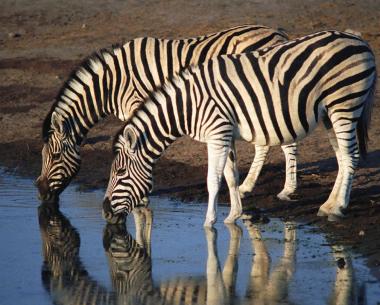
Who does not remember the book by Bernhard Grzimek "Serengeti shall not die"? He wrote it in 1959, and caution were the areas that really escaped unscathed, not least thanks to the book. Savannah, on the shores of Lake Victoria in northern Tanzania in the same year was placed under the protection of the law on the protection of nature and today is the region with the largest number of species of wild animals on the continent. On the "endless plains" area of almost 15,000 km2 enough space for walking huge herds of zebras, giraffes and antelopes and abundant food for carnivorous animals. In 1981, UNESCO made the Serengeti World Heritage Site.
Kilimanjaro National Park
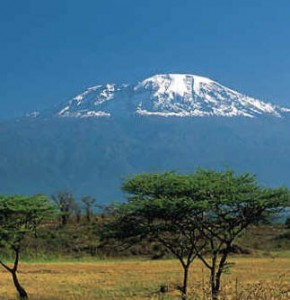
Three fused extinct volcano in northern Tanzania, the mountain massif of Kilimanjaro with the highest African peak Kibo (5895 m). In 1973, about 1,700 km2 of forested areas (iogoplodnik, tree fern) were declared a national park, and in 1987, included in the UNESCO World Heritage List. One of the saddles array covered ice peaks is relatively flat tundra. As you approach the foot of the mountain vegetation becomes more and more diverse fauna is represented. Here you can see mountain goats, antelope, is among kshta, elephants, leopards, monkeys and other mammals.
Zanzibar
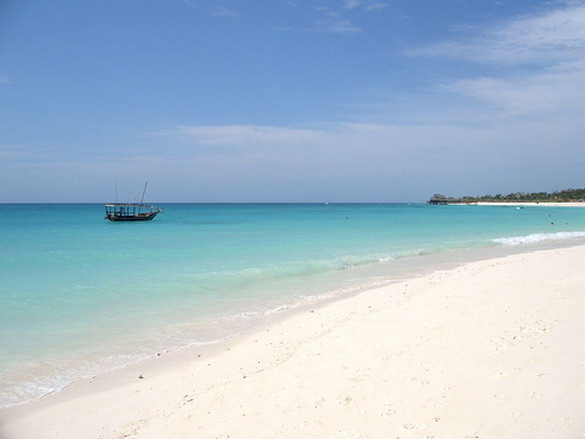
Zanzibar - the "island-reserve" once known as the "Spice Island" lies 40 km east of the mainland coast. One of the most charming places in the Indian Ocean and one of the oldest shopping centers in the world, the island was known at the time of the Sumerians and Assyrians. In the Middle Ages the island captured by the Arabs, and the Sultan of Oman's even posted here his residence. Arab influence can be seen on the island and now - in the architecture is clearly dominated by Arabic motifs, the vast majority of the population is Muslim and speak Arabic (most zanzibartsev rooted in nationalism "Bantu", but the influence of Arab blood in the local phenotype clearly visible to the naked eye) . More than half of the island is occupied by plantations of cloves, cinnamon and other spices, which brought the island its glory and make up the bulk of its exports. The rest area is covered with thickets of tropical crops and savanna, which gives numerous monuments Zanzibar recognizable look.
Cities in Tanzania
Dar es Salaam
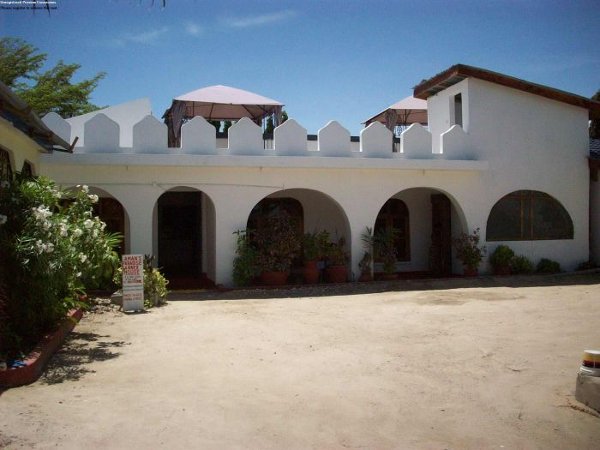 Dar es Salaam (or
just a gift, as it is known locally) - the old capital of the country
and one of the largest cities in the region. The city's name can be
translated from Swahili as "peaceful haven", which is not surprising -
the harbor, which gave rise to the city, allowed to hide from the storm,
even large ships. Sultan of Zanzibar, and therefore decided to set up on
the site of a small fishing village town, who later became the capital
of the country.
Dar es Salaam (or
just a gift, as it is known locally) - the old capital of the country
and one of the largest cities in the region. The city's name can be
translated from Swahili as "peaceful haven", which is not surprising -
the harbor, which gave rise to the city, allowed to hide from the storm,
even large ships. Sultan of Zanzibar, and therefore decided to set up on
the site of a small fishing village town, who later became the capital
of the country.
The sights of the city are the palace of the Sultan Majid (XIX c.),
Clock Tower (1961), a monument in honor of the Askari died on the fields
of the First World War (1972), St. Alban's Anglican Church (1926), a
Lutheran Cathedral (1898-1904 gg.), the Greek Orthodox Church (mid XX
century.), the Catholic Church of St. Peter (1962), the Catholic
Cathedral (1897-1902 gg.), Darkhan-Jamaat mosque Khan (1930 ), mosques
Ibaddi, Memon, a Sunni, Ahmad and others (a whole street of the city
called Mosca Street - "Street mosque"). Also of interest are National
Museum with a great archaeological and anthropological collections,
Village Museum with these dwellings in all regions of Tanzania, an art
gallery Nyumba-I-san with a large collection of products of traditional
crafts, the Botanical Gardens in the city center, next to the National
Museum and the University of Mlimali ("hills") to the north-west of the
city center.
Stone Town
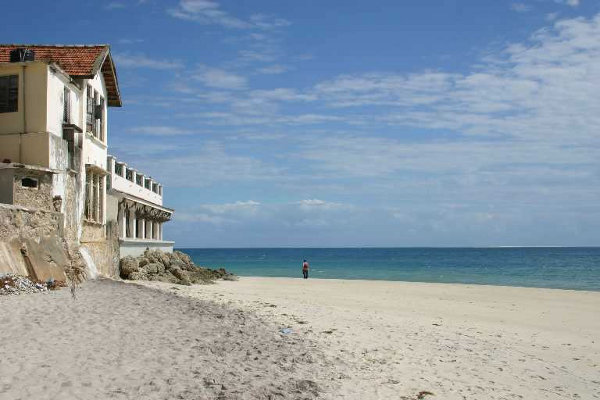 Mellifluous
exotic word "Zanzibar" attracts the attention of tourists when choosing
a vacation spot. But let's see what is hiding under that name. After
Zanzibar archipelago and known, and the main island of the archipelago,
also called Unguja, and the main town of the island. Sure, each of the
three geographical units has its own attractions and charms, but the
trip to Tanzania will certainly lead you to the town of Zanzibar - the
capital of the island country. This ancient historical site on the
island now included in the UNESCO World Heritage List.
Mellifluous
exotic word "Zanzibar" attracts the attention of tourists when choosing
a vacation spot. But let's see what is hiding under that name. After
Zanzibar archipelago and known, and the main island of the archipelago,
also called Unguja, and the main town of the island. Sure, each of the
three geographical units has its own attractions and charms, but the
trip to Tanzania will certainly lead you to the town of Zanzibar - the
capital of the island country. This ancient historical site on the
island now included in the UNESCO World Heritage List.
The city has other names: the locals call the capital Shangaani - so
called by the Bantu tribe of Mozambique, which was first settled in the
area. In 1831, the Sultan of Zanzibar appreciated the importance of deep
bay at village as a potential port, which will sail for slaves and
spices Arab and European trading ships. It is based on the site Stone
Town - Stone Town, in contrast to the villages of Zanzibar in the city
were built only stone houses, but there was no plan to build. And every
owner put his house as he was comfortable, trying to keep the building
was as much room. As a result, the town became a maze of narrow, winding
streets, which strayed a generation of foreign traders and sailors. Well
known from the 8th century, Stone Town was a major port, the shopping
center and the center of the slave trade. Later began to perform the
functions of Dar es Salaam and Mombasa. In the mid 19th century, the
city became the capital of the Stone Ottoman Empire, still in the
Anglican Cathedral, which was built on the site of a former slave
market, you can see some cells in which the slaves at the time.
Later, Stone Town was transportation center researchers, travelers and
colonizers from Europe, in particular - Portugal. It is here preparing
for his final expedition, David Livingstone. In his honor, in the
Anglican cathedral set crucifix carved out of the tree under which they
buried the heart of the famous explorer.
Even today the city remains the economic, administrative and cultural
center of the islands of Tanzania. Major sea port allows even
approaching ocean ships, hence export of works on the island of clove
oil and clove oil, coconut oil, copra. Stone Town is located in the
residence of the first vice-president of Tanzania.
Tourists tend to swim in Stone Town on the ferry, which runs regularly
from Dar es Salaam to Stone Town. Another way to "the island capital"
Tanzania - Kisauni Airport where arriving by plane from other large
cities.
In the old part of the city, most houses are 100-150 years longer, they
laced balconies and carved doors and elegant porches often give similar
to palaces. No wonder so enticing tourists walking (car is simply not
drive!) Through the narrow winding streets of palaces, historical
buildings, amazing coral stone houses, small shops, traditional Arab
houses with turrets and ancient ruins.
The architecture of the city is not only influenced by Arabic and Indian
culture, but also - and later - European, as well as trends of different
religions in a small (1.5 to 2 km) Stone Town over 50 mosques, six Hindu
temples, two Catholic churches.
Many buildings now fallen into disrepair, and some beautiful palaces,
houses belonging to the sultans, and historical sites altogether
destroyed, because due to the lack of funds is not properly maintained.
But, nevertheless, in the city there are many old buildings and palaces
that have survived to the present day, and they will no doubt be
inspected by tourists.
One of these places - the Arab fort, built in the years 1710-1715 on the
site of the old Portuguese fortifications. Today you can not only see
itself fort, a collection of furniture and clothing, preserved since the
days of the sultans, and eat, and even sleep. And sometimes in the
premises of the fort for concerts and performances.
Perfectly preserved the famous Palace of Wonders - Beit El Adzhaib,
built in 1883 for Sultan Said Bargasha marine engineer from Scotland.
The palace was indeed filled with "incredible miracles": this is the
first elevator in Zanzibar, and running water, and the "light Lenin!"
During the shortest war British Zanzibar for 45 minutes fired Palace of
Wonders, and the owner gave up, and the Beit el-Adzhaib empty. For a
long time in the Palace of the locals wanted to have historical or
cultural museum, but later decided to just turn it into a restaurant -
in the evening in the square at the Palace of Wonders zanzibariytsy
sing, roast meat and rest.
Anglican Cathedral was built in the years 1873-1874 on the site where
once traded slaves. It is interesting that at the time of its
construction, the builders from the local community during the absence
of the chief architect of the column installed at the entrance to the
temple upside down! The eight columns are preserved in this way so far.
In Stone Town many other ancient and fascinating buildings - the
Cathedral of St. Joseph, Christ Church Cathedral, a Hindu temple, a
mosque of the Aga Khan and Malindi - one of the three mosques in East
Africa with a conical minaret. The history of the "Blue Mosque": in the
mid-70s of the last century after the proclamation of the Democratic
Republic of Tanzania, the government has decided to please the people of
Zanzibar Stone Town "national pool" in the open air, which was built on
the site of the destroyed Blue Mosque. Naturally, this caused resentment
of the local population, most of whom professed the Muslim religion.
Apparently negative emotions were effective, as the pool is constantly
leaking, despite the fact that it tried to "patch" for 20 years. As a
result, in 1995, was rebuilt on the old site a new Blue Mosque, and you
can view the current tourists.
In Stone Town is interesting to visit the National Museum, which will
tell you the history of the islands, as well as the Palace Museum, where
the situation remained the reign of the sultans. In the latter there is
a room devoted to the daughter of Sultan Seida - Princess Salma, which
in the 19th century to flee out of the palace with a German businessman.
Tanga
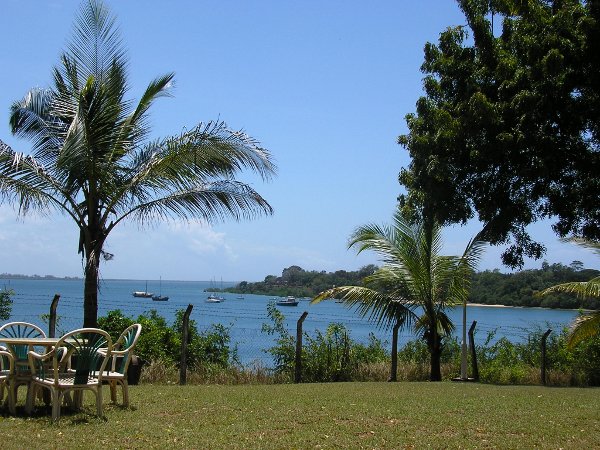 One of the
major cities of Tanzania - Arabian port city of Tanga is situated on the
Indian Ocean, near the border with Kenya. Opposite coast of Tanga -
Pemba island, from which the city of the same name separated Strait. In
comparison with other major African cities, Tanga offers serenity and
comfort. In addition to the port in the city is an important railway
junction, which connects the coast of Tanzania, with the central part of
the country: here are the train in Dar es Salaam - Tanzania's economic
capital, as well as to the African Great Lakes (Tanganyika and
Victoria). For these reasons, Tang was one of the important centers of
trade and exports: the port of trafficked goods such as tea, coffee,
cotton and others. Here are the food-processing, textile, wood, metal
industries, but most locals still engaged in agriculture and fishing.
Currently, the city's population has decreased slightly due to the
difficult economic situation, and is about 200 thousand.
One of the
major cities of Tanzania - Arabian port city of Tanga is situated on the
Indian Ocean, near the border with Kenya. Opposite coast of Tanga -
Pemba island, from which the city of the same name separated Strait. In
comparison with other major African cities, Tanga offers serenity and
comfort. In addition to the port in the city is an important railway
junction, which connects the coast of Tanzania, with the central part of
the country: here are the train in Dar es Salaam - Tanzania's economic
capital, as well as to the African Great Lakes (Tanganyika and
Victoria). For these reasons, Tang was one of the important centers of
trade and exports: the port of trafficked goods such as tea, coffee,
cotton and others. Here are the food-processing, textile, wood, metal
industries, but most locals still engaged in agriculture and fishing.
Currently, the city's population has decreased slightly due to the
difficult economic situation, and is about 200 thousand.
The economy then a village began to develop in 1889, when the garrison
houses the German East Africa, making the Tang capital of the German
colony. Several years earlier, brought here agave (sisal), due to which
it was to prosper and grow the local population. Subsequently, for
transport to export station was built on the Usambara railway line,
which ran up to the Kilimanjaro. This fact has also served as the
economic development of the city.
Battle for Tanggu November 4, 1914 went down in history of World War I,
British and Indian troops wanted by all means take the starting point of
the Northern Railway, but German troops remained in the city, reflecting
the onset of their number exceeded eight times, and dropping
Anglo-Indian descent to the sea. But by 1916, in East Africa, the
British arrived many reinforcements, and 17 July, Tang was taken.
Currently preserved German war graves from that time.
Tang was granted city status in 1995, along with the municipalities of
Mbeya and Mosha. The center of the port city, of course, is the harbor
and its surroundings, there were built bars, shops and hotels, and only
in the "high-rise" - building above eight floors. Yet Tang - the city,
from where the quiet relaxing holiday. Located south of the Kenyan
border, it is famous for the coastal zone, cozy parks, luxurious sandy
beaches, surrounded by coconut palms and healing sulfur springs. And
from the windows of the hotel, directly facing the ocean, you can enjoy
stunning views of endless.
Settled along the shores of the whole fishing communities: interesting
to observe the life and customs of the local people. Online fishermen
across not only fish, but sea stars, crabs, and other representatives of
the underwater world. Catch women undress and prepare here on the coast,
and specialize in fresh seafood to tourists. It is also the fish market,
and you can rent a boat and hand-made by going to the ocean for fishing
or just swim under sail.
The architecture of the Tang, as in many other Tanzanian cities, there
is a mixture of different cultures and traditions. There are ancient
dilapidated walls of Arab houses and the ruins of the German colonial
buildings. Walking the streets of Tanga secluded, be sure to turn in old
German Park, where the building is preserved Arab construction, which is
now a library. Also curious to see the memorials and monuments War. In
the neighborhood you can see the church of St. George.
At 17 kilometers south of Tanga on the site of the port is a small
village surrounded by amazing Tongoni palms with forked tops. It is
believed that the village was founded by Shirazi - immigrants from
Persia. Until the 12th century Tongoni was a thriving commercial center,
but violated the Portuguese economic ties have led to its demise. Now
there are ruins dating back to the 15th century - the remains of mosques
and tombs. Under the branches of the mighty baobab trees are crumbling
columns and stone graves, braided vines, reminding of the past
greatness. Hence the great views and natural attractions - mangroves.
Near the town of Tanga is another must - caves Ambon. This is the most
extensive limestone caves, formed about 150 million years ago. According
to rumors, the length of stroke is about 200 kilometers, and from the
underground system there are outlets in Kenya and in the region of
Kilimanjaro. Speleological research in 1994 showed that the longest
course is 900 meters long.
Tanzanian government to block access to the caves for safety purposes,
but some of them are open to inspection by tourists. The height of these
moves is 10 meters, and there are holes in the ceiling, through which
the sunlight falls. Through these holes the same vines that grow on the
bottom to the surface. Ambon caves are home to several colonies of bats
meshkokrylyh family.
From this place involves a lot of stories that will tell the tourists
guides from the local population. The local tribes still attached to the
religious significance of the caves here and bring food and bottles of
blood of animals.